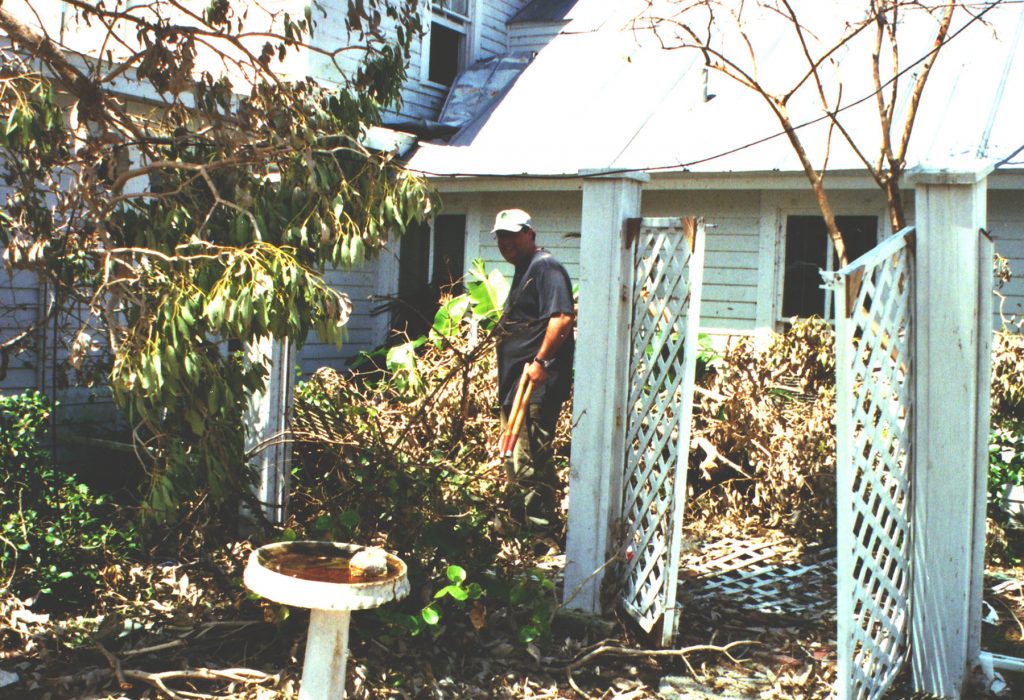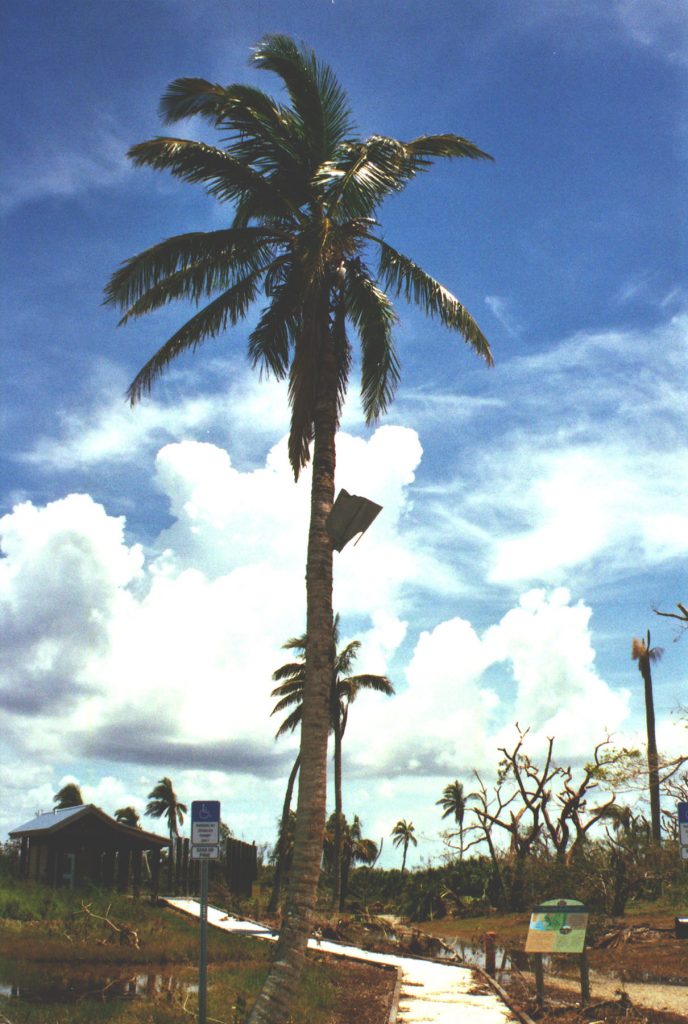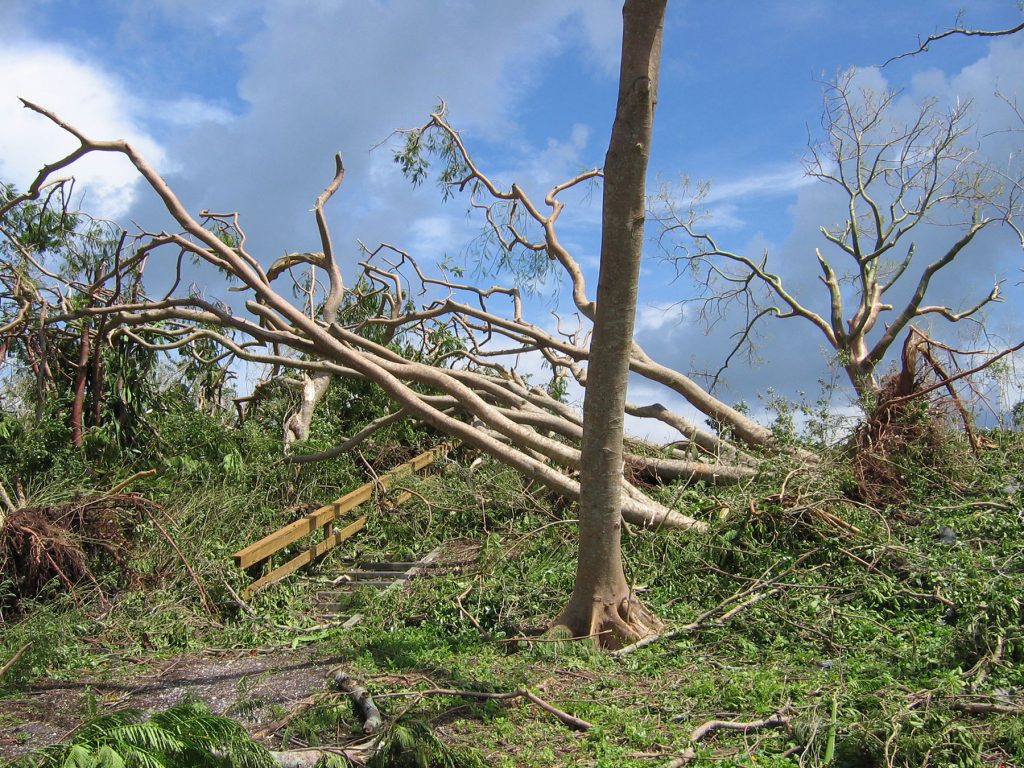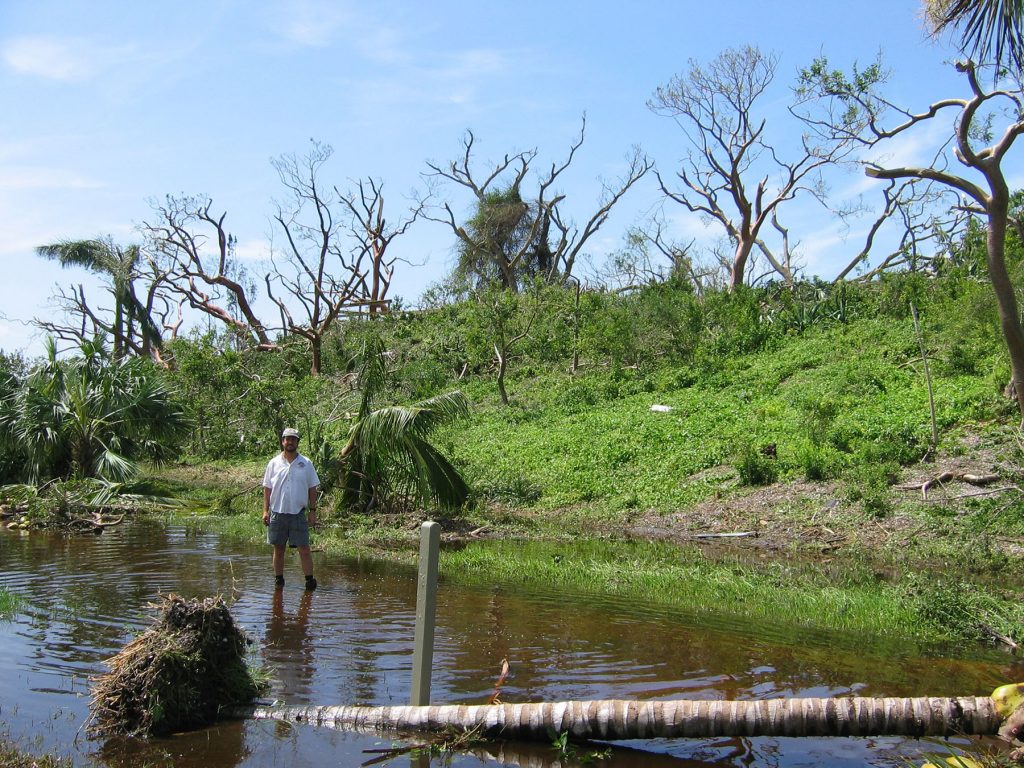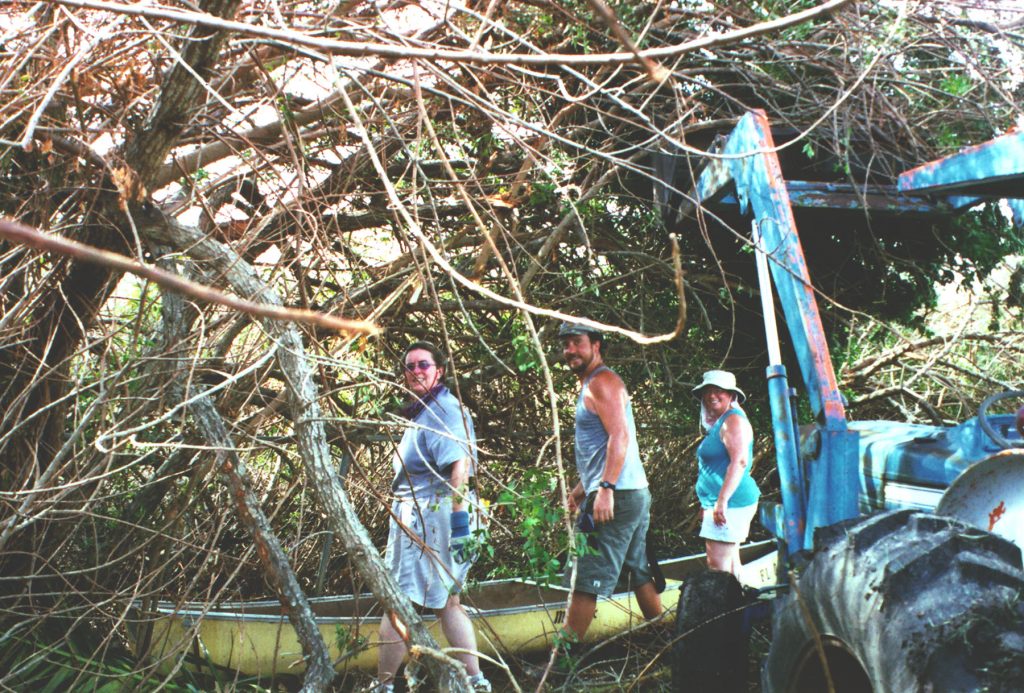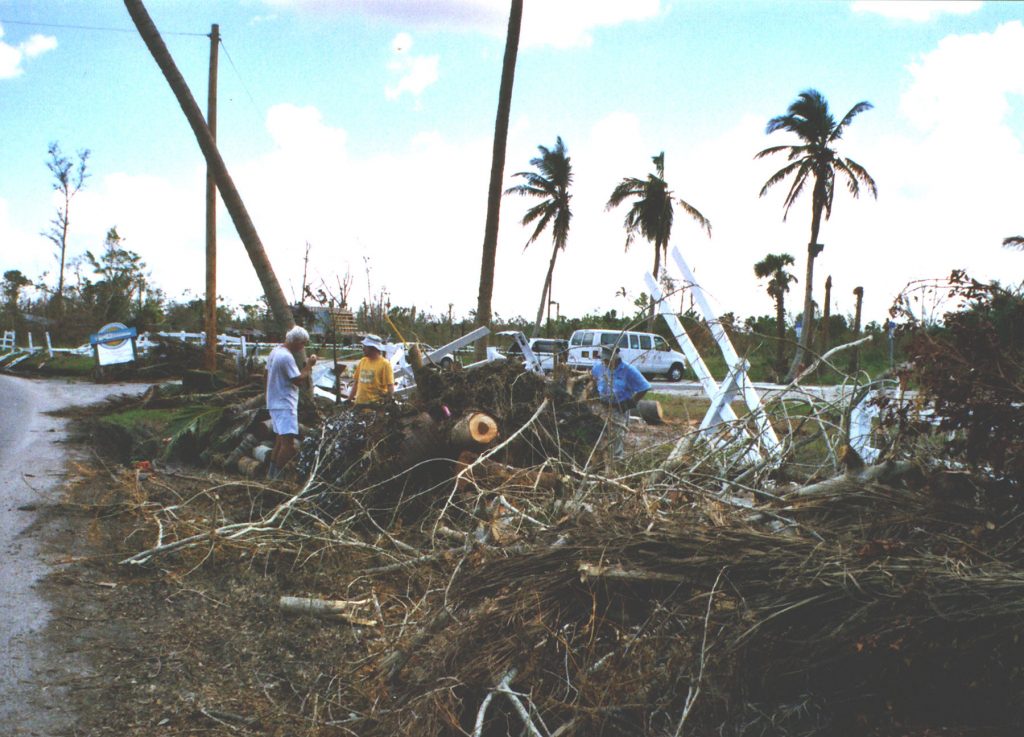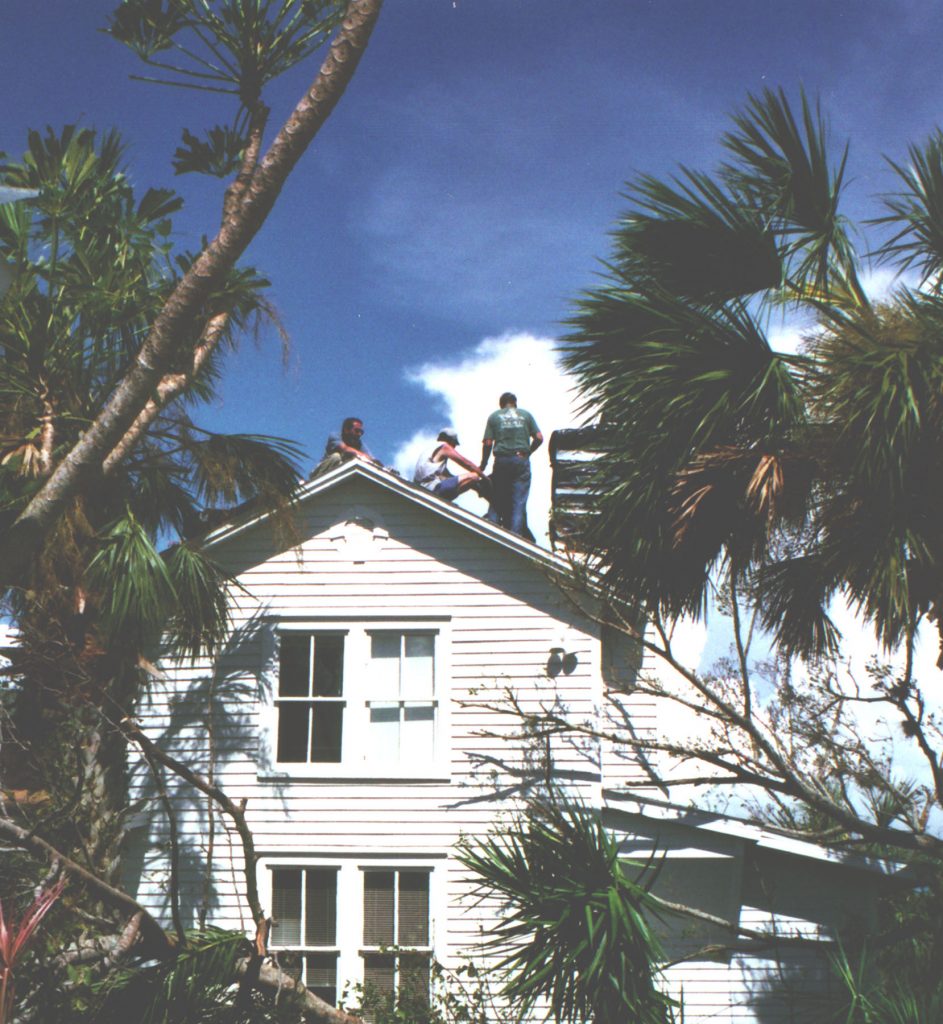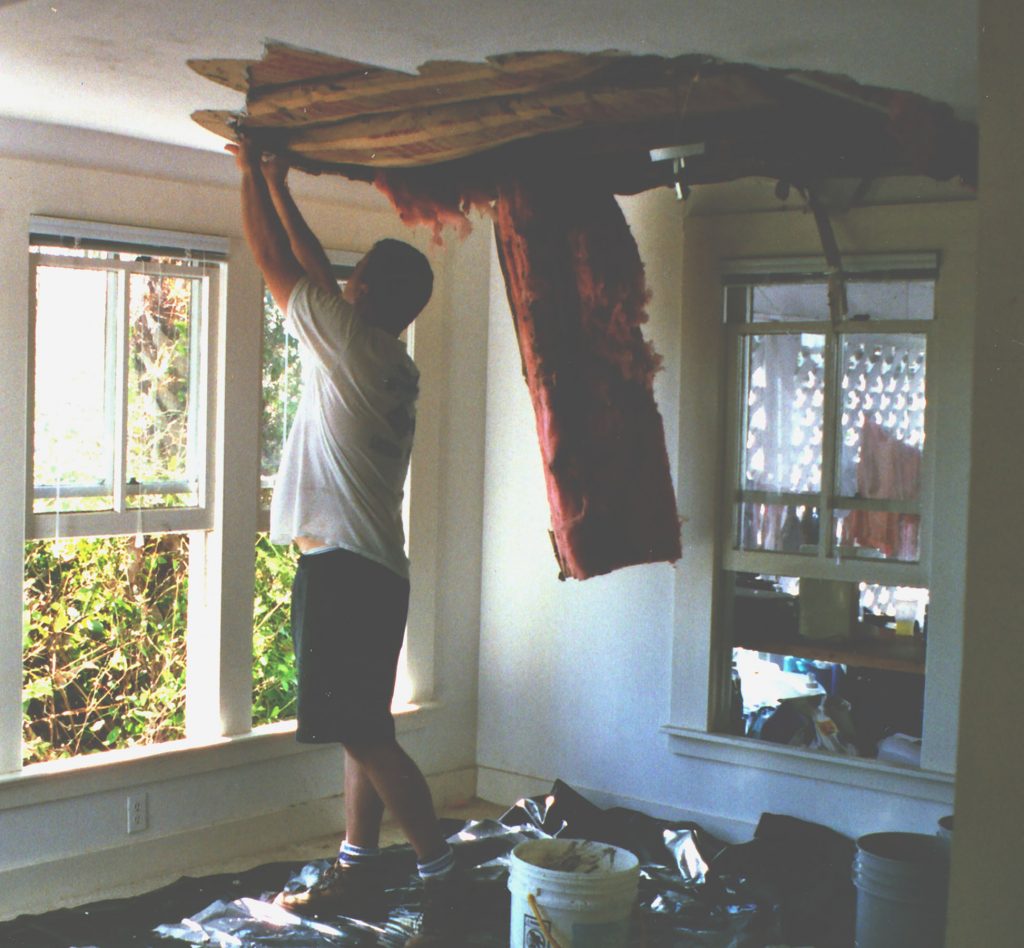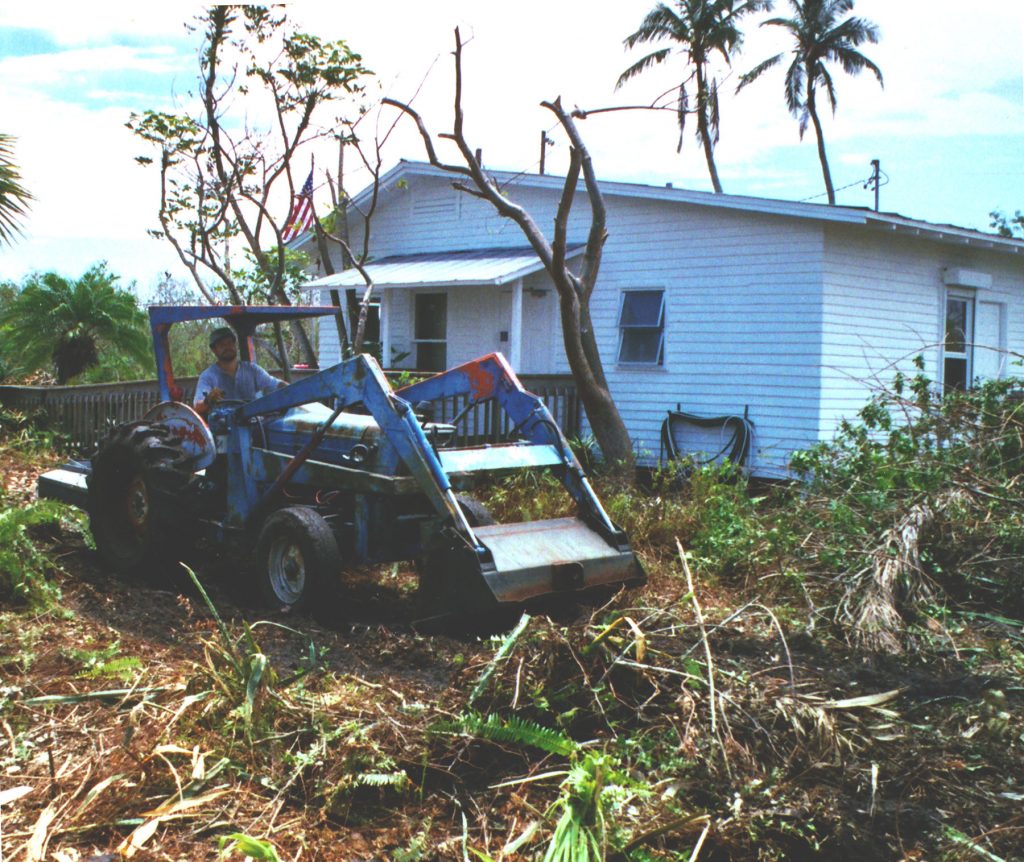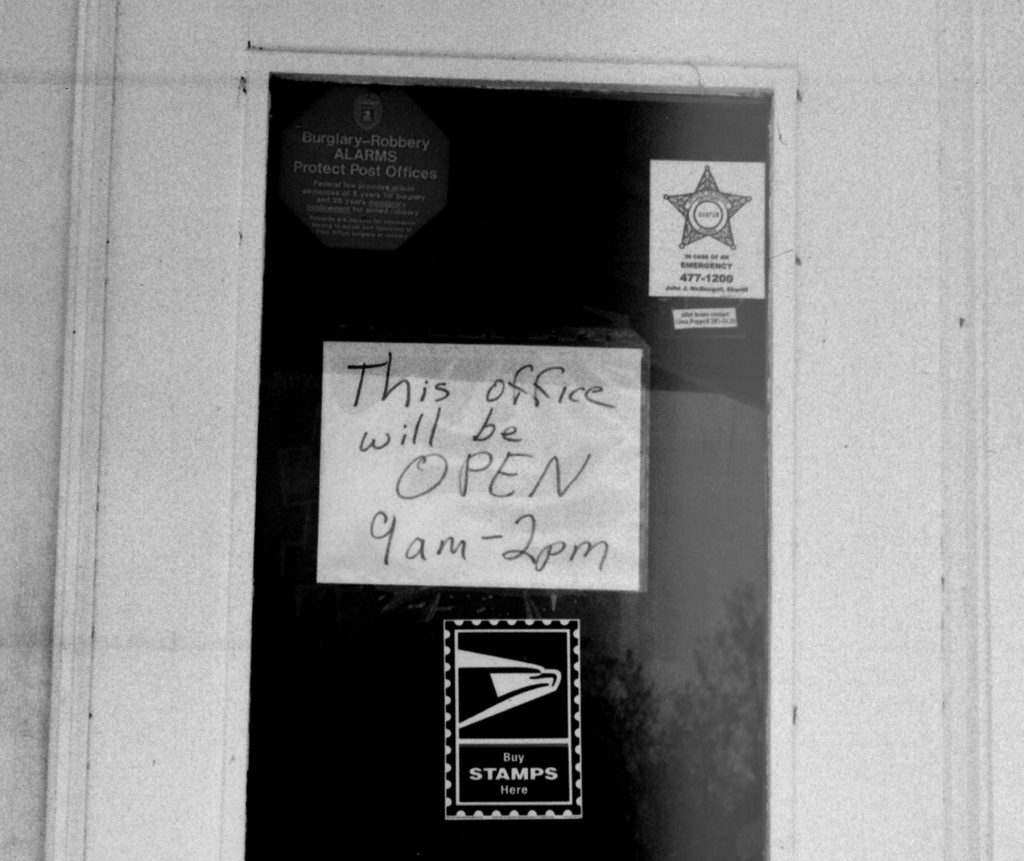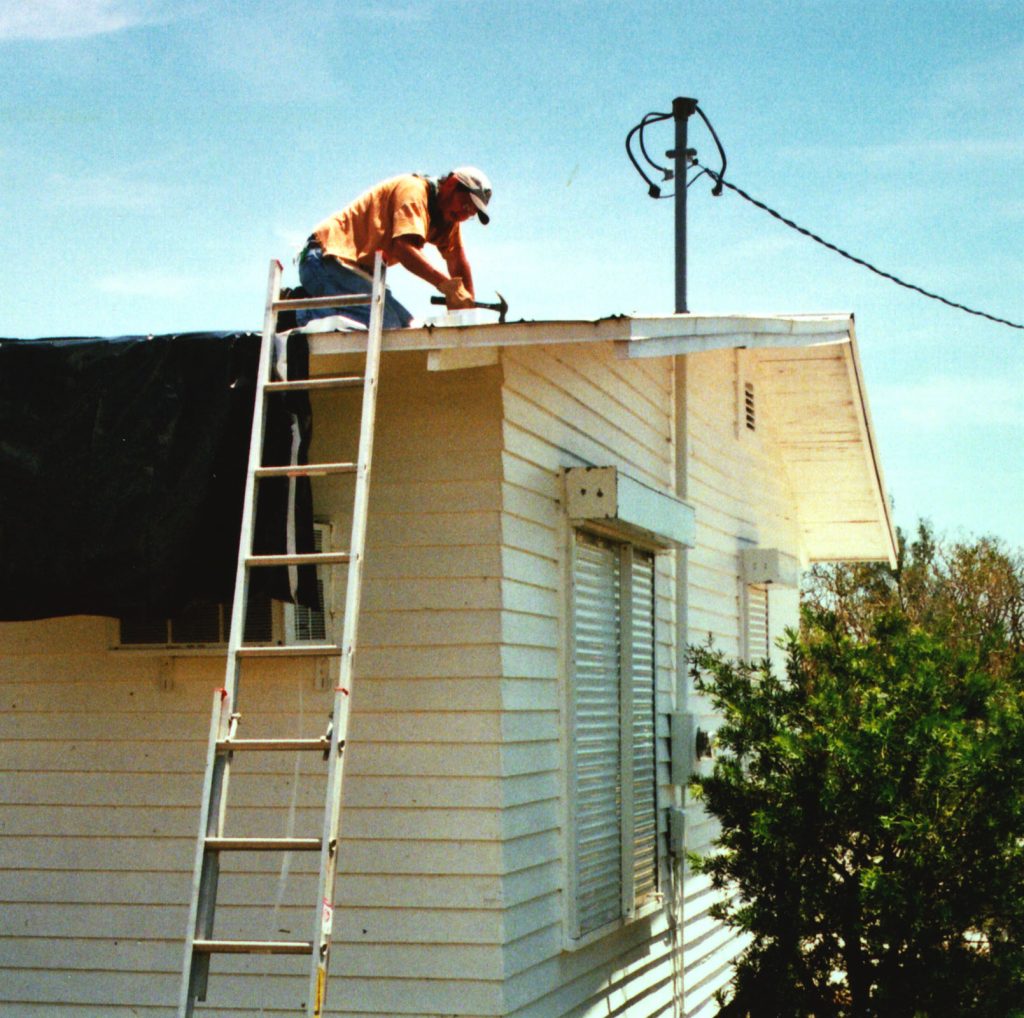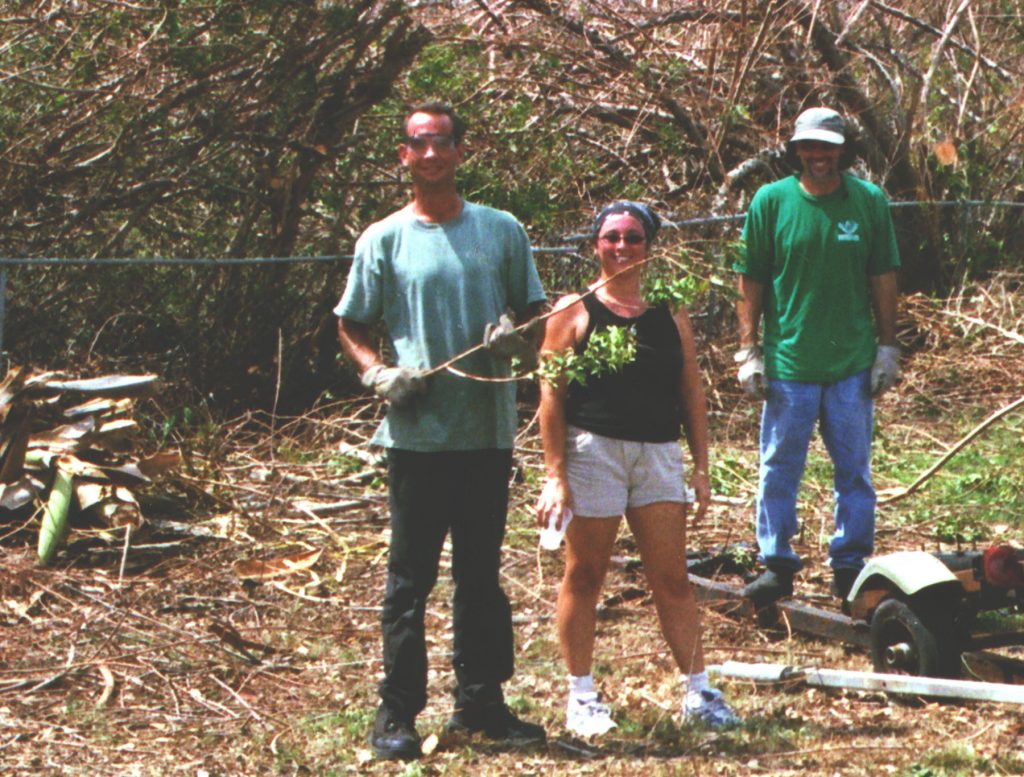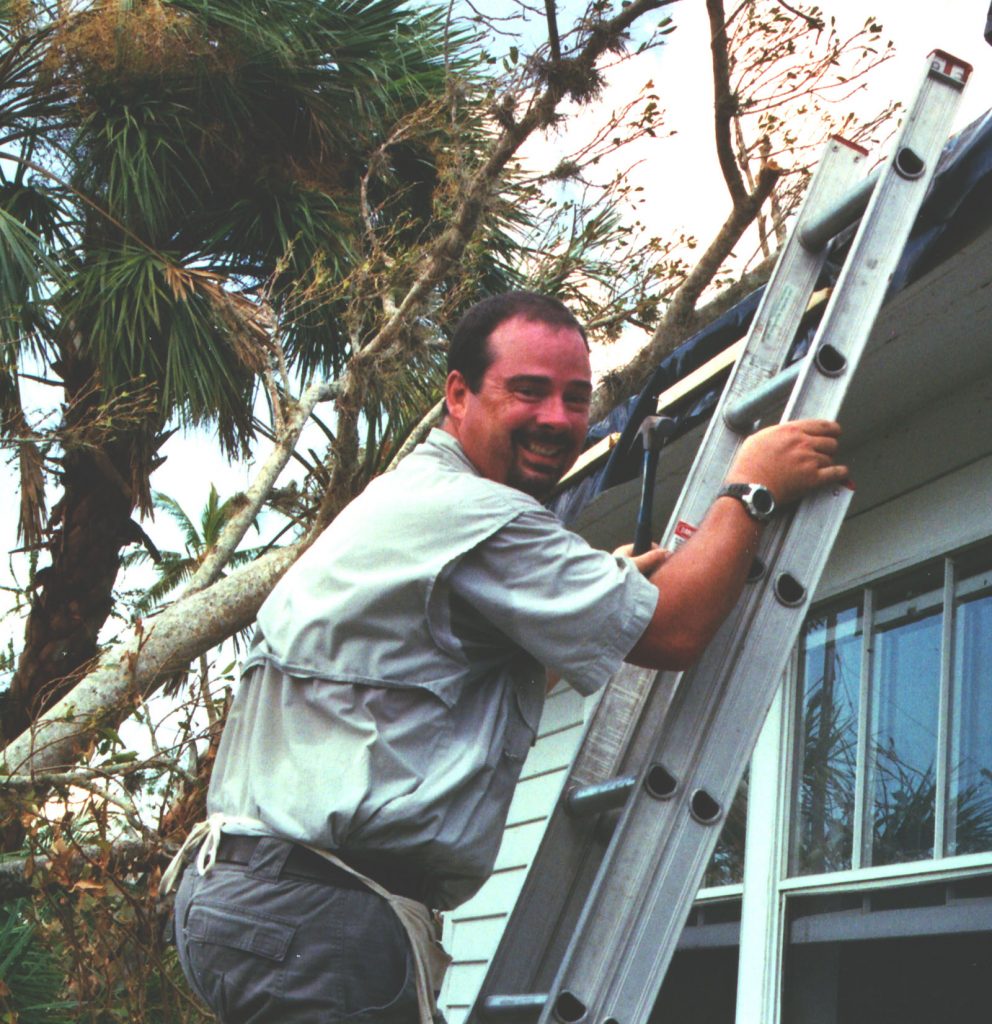On Friday, August 13, northern Pine Island took a direct hit from fast-moving and powerful Hurricane Charley. The path of the eye was North Captiva – Useppa/Cabbage Key – Pineland – Bokeelia – Punta Gorda.
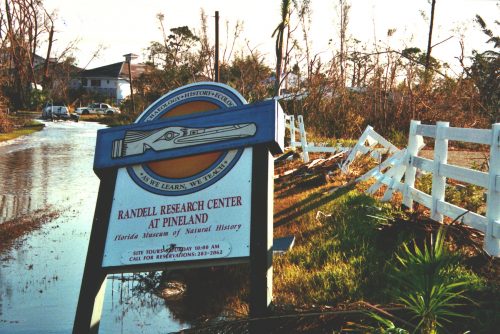
Sustained winds of over 150 mph with gusts to 185 mph harmed or destroyed many local homes and businesses, felled countless trees, and stripped almost all of the leaves off the trees that did remain standing. The storm moved through so rapidly that the surge was minimal, about 4 feet, but this was enough to flood some homes on Waterfront Drive. Across from the main entrance to the Pineland site, the Tarpon Lodge was hit heavily and flooded, and the Pineland Marina was destroyed. All RRC staff members were unharmed, but all endured some damage to their homes.
Our headquarters house at 7450 Pineland Road had much of its metal roof ripped away, causing some flooding to the interior. Only one small window was broken, and almost no damage to equipment was sustained. The garage lab was flooded.
John Worth was on the scene first, documenting the landscape at both the headquarters house and the site. Karen Walker and I made our way to Pineland the day after the storm to begin the clean-up. The first priority was to secure the roof. With this task we were ably assisted by David Harlos, Scott Mitchell, Jon Fajans, and John Worth. Florida Museum colleagues George Hecht, Elise LeCompte, Paul Ramey, Donna Ruhl, and Al Woods also spent several days with us, working through the heat of the day and “camping” in the darkened house at night.
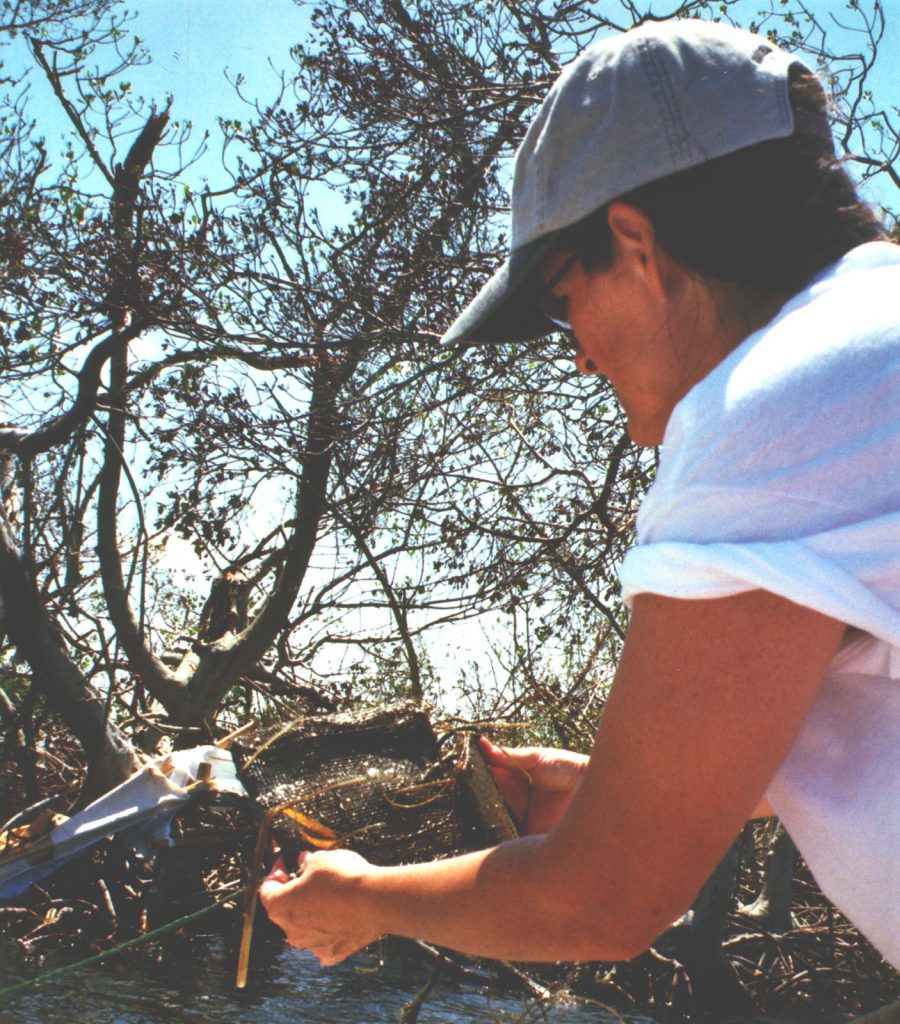
Telephone and water services were back on by the 18th, but power was not restored until August 28. By week 2, RRC staff had secured their own houses and returned enthusiastically to work. Much vegetation was down in our yard and at the site. Together we managed to clear much of the yard and finished cleaning the house. Then, with help from students and staff of Florida Gulf Coast University coordinated by Carol Newcomb-Jones, on August 27 we began the formidable task of clearing the Pineland site and restoring the native plant landscaping.
The Pineland site looks very different. Because so many trees are down and the remaining ones are temporarily bare, one can now see all the mounds and out to the waterfront when standing on Brown’s Mound. None of our new Calusa Heritage Trail signs was badly hurt, though numerous heavy tree limbs fell all about them. One wayfinding sign was missing, but then later found, unharmed except for being caked with mud.
On August 30, workers began to repair the roof damage from Charley but on Labor Day weekend, slow-moving and ponderous Hurricane Frances paid an unwelcome visit. The RRC was further damaged, with flooding of the offices/labs due to leakage where the roofers had put down only a single layer of tarpaper. Now three rooms will need new ceilings and carpets instead of just one. Again, there was no damage to equipment. However, the landscaping that we had restored in late August was again disturbed and flooded by Frances. Clean-up efforts have resumed yet again as this newsletter goes to press.
This article was taken from the Friends of the Randell Research Center Newsletter Vol 3, No. 3. pp1-4 September 2004 and Vol 3, No. 3. pp5-10 September 2004.
